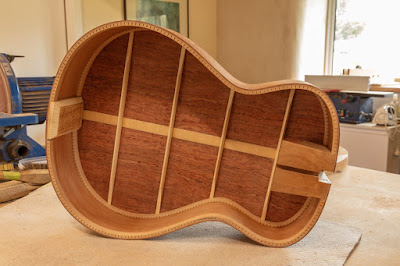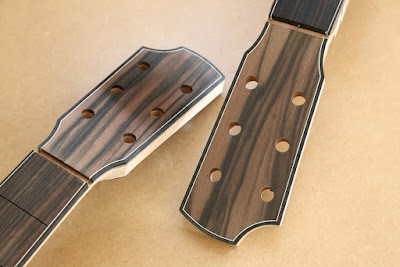As many of my blog posts hereabouts will attest, construction of my workshop occupied me for the best part of four years; even now there are "finishing off" tasks that divert me from guitar building. More significantly, the list of jobs around the house expanded impressively while I was focused on the workshop, so I've made a point of addressing enough items on the list over the past few weeks that I've been able to increase my guilt-free time attending to a couple of new guitars, both of which are at a similar state of completion.
I added some inner laminations of cherry veneer to the sides on these guitars, the advantages being that:
- the potential for cracks in the sides is largely eliminated meaning that the application of bias tape or cross-grain wooden reinforcement is no longer required.
- the sides are dead flat across the grain once laminated; there's no cupping or rippling and therefore no requirement to sand them flat.
- a stiffer and more massive rim assembly means that the vibration of the top and back plates is absorbed by the sides to a lesser degree than would otherwise be the case.
There are many ways to laminate the sides, but I settled on using a jig modelled after the one pictured below, the idea for which I borrowed from guitar builder Ryan Gerber.
 |
| Side laminating jig |
 |
| Australian blackwood/Engelmann spruce OM |
 |
| Bubinga/Sitka spruce OM |

















